#Atmospheric chemistry
Text
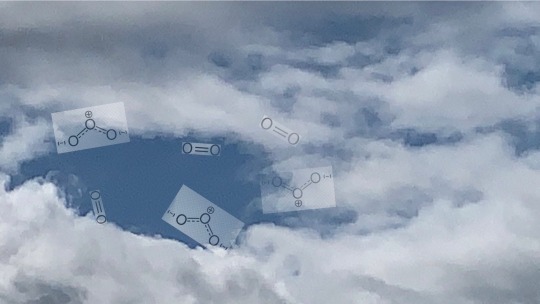
if you just look hard enough… beautiful <3
#i think i’m the only person to find this entertaining#ozone#ozone oxygen cycle#atmospheric chemistry#ozone layer#chemistry meme#atmospheric chemistry meme#science meme#ozone meme#nerd#science
11 notes
·
View notes
Text
Susan Solomon wins VinFuture Award for Female Innovators
New Post has been published on https://thedigitalinsider.com/susan-solomon-wins-vinfuture-award-for-female-innovators/
Susan Solomon wins VinFuture Award for Female Innovators
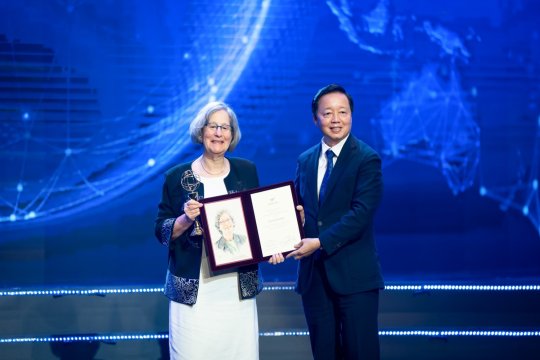

Lee and Geraldine Martin Professor of Environmental Studies Susan Solomon has been awarded the 2023 VinFuture Award for Female Innovators. Solomon was picked out of almost 1,400 international nominations across four categories for “The discovery of the ozone depletion mechanism in Antarctica, contributing to the establishment of the Montreal Protocol.” The award, which comes with a $500,000 prize, highlights outstanding female researchers and innovators that can serve as role models for aspiring scientists.
“I’m tremendously humbled by that, and I’ll do my best to live up to it,” says Solomon, who attended the ceremony in Hanoi, Vietnam, on Dec. 20.
The VinFuture Awards are given annually to “honor scientific research and breakthrough technological innovations that can make a significant difference” according to their site. In addition to Female Innovators, the award has two other special categories, Innovators from Developing Countries and Innovators with Outstanding Achievements in Emerging Fields, as well as their overall grand prize. The awards have been given out by the Vietnam-based VinFuture Foundation since 2021.
“Countries all around the world are part of scientific progress and innovation, and that a developing country is honoring that is really very lovely,” says Solomon, whose career as an atmospheric chemist has brought her onto the international stage and has shown her firsthand how important developing countries are in crafting global policy.
In 1986 Solomon led an expedition of 16 scientists to Antarctica to measure the degradation of the ozone layer; she was the only woman on the team. She and her collaborators were able to figure out the atmospheric chemistry of chlorofluorocarbons and other similar chemicals that are now known as ozone-depleting substances. This work became foundational to the creation of the Montreal Protocol, an international agreement that banned damaging chemicals and has allowed the ozone to recover.
Solomon joined the MIT faculty in 2012 and holds joint appointments in the departments of Chemistry and Earth, Atmospheric and Planetary Sciences. The success of the Montreal Protocol demonstrates the ability for international cooperation to enact effective environmental agreements; Solomon sees it as a blueprint for crafting further policy when it comes to addressing global climate change.
“Women can do anything, even help save the ozone layer and solve other environmental problems,” she says. “Today’s problem of climate change is for all of us to be involved in solving.”
#000#2023#Antarctica#Atmospheric chemistry#Awards#honors and fellowships#career#change#chemicals#chemistry#climate#climate change#Developing countries#EAPS#earth#Environment#Environmental#Faculty#Foundation#Global#how#Innovation#innovations#it#LED#measure#mit#Other#Ozone#ozone layer
2 notes
·
View notes
Link
Atmospheric chemists from the University of Pennsylvania analyze sulfur in the Venusian atmosphere
#venus#University of Pennsylvania#upenn#atmospheric chemistry#planet venus#astrochemistry#chemistry#atmospheric science#venusian#planets#planetary atmosphere#sulfur#atmosphere#clouds#space science#science#u penn#pennsylvania#chemist#venusian chemistry
7 notes
·
View notes
Text
Remembering the Legacy of Mario Molina: The Environmental Scientist Who Changed the World
Mario Molina is a Mexican chemist who is widely recognized for his work on the effects of chlorofluorocarbons (CFCs) on the Earth’s ozone layer. He was born in Mexico City on March 19, 1943, and passed away on October 7, 2020. Molina’s scientific contributions and advocacy for environmental protection have earned him numerous awards and accolades, including the Nobel Prize in Chemistry in…

View On WordPress
#advocacy#atmospheric chemistry#CFCs#environmental protection#impact#legacy#Mario Molina#ozone layer#science education#sustainable development
0 notes
Text
NASA sees Tropical Cyclone Nora become a hurricane



IMAGE: On March 23 at 12: 36 a.m. EDT (0436 UTC) a noticeable picture of Hurricane Nora was obtained from the VIIRS instrument aboard NASA-NOAA’s Suomi NPP satellite as it continued …
view more
Credit: Credits: NOAA/NASA Quick Action Group
NASA satellite images revealed that Hurricane Nora established an eye as it enhanced into a typhoon north of Australia. NASA-NOAA’s Suomi NPP satellite supplied forecasters with a noticeable picture of the storm, previously called Hurricane 16 P.
The Australian Bureau of Meteorology or ABM released cautions and expect Nora. A Caution Zone is in impact from the mouth of the Gilbert River to Thursday Island, consisting of Weipa. The Watch Zone extends from the Northern Territory/Queensland border to the mouth of the Gilbert River.
On March 23 at 12: 36 a.m. EDT (0436 UTC) the Noticeable Infrared Imaging Radiometer Suite (VIIRS) instrument aboard NASA-NOAA’s Suomi NPP satellite caught a noticeable picture of Hurricane Nora as it continued moving in between northern Australia and New Guinea. The image was developed at NASA’s Goddard Space Flight Center in Greenbelt, Maryland and revealed an eye surrounded by effective thunderstorms covering into the low-level center of flow.
At 5 a.m. EST (0900 UTC) on March 23, the center of Hurricane Nora was 438 nautical miles east-northeast of Darwin, Australia near 11.0 degrees south latitude and 138.5 degrees east longitude. Nora was approaching the southeast near 15 miles per hour (13 knots/24 kph). Optimum sustained winds were near 75 miles per hour (65 knots/120 kph) making Nora a Classification 1 cyclone on the Saffir-Simpson cyclone wind scale.
Nora is anticipated to continue reinforcing and moving southeast into the Gulf Carpentaria.
ABM kept in mind on March 23 “Serious Hurricane Nora continues to magnify as a Classification 3 strength cyclone as it moves southeasterly throughout the northern Gulf of Carpentaria. The Hurricane is anticipated to reach Classification 4 strength throughout Saturday while over the northeast Gulf of Carpentaria. On Sunday, the Hurricane is anticipated to take a more southerly track and move to the southeastern Gulf of Carpentaria coast, although a seaside crossing anywhere along the western Cape York Peninsula south of Mapoon throughout Saturday afternoon or Sunday is likewise possible. By Monday, the Hurricane is anticipated to end up being sluggish moving over the southeastern Gulf of Carpentaria or inland of the coast.”
The Joint Tropical cyclone Caution Center’s prolonged projection requires Nora to approach Mornington Island on March 26 and make landfall in southwestern Queensland on March 27.
For projection updates, go to ABM: http://www.bom.gov.au
###
Disclaimer: We can make errors too. Have a great day.
New post published on: https://livescience.tech/2018/03/24/nasa-sees-tropical-cyclone-nora-become-a-hurricane/
#ATMOSPHERIC CHEMISTRY#ATMOSPHERIC SCIENCE#CLIMATE SCIENCE#EARTH SCIENCE#METEOROLOGY#OCEANOGRAPHY#TECHNOLOGY/ENGINEERING/COMPUTER SCIENCE#TEMPERATURE-DEPENDENT PHENOMENA#WEATHER/STORMS
0 notes
Text
How Venus Is Losing Its Water
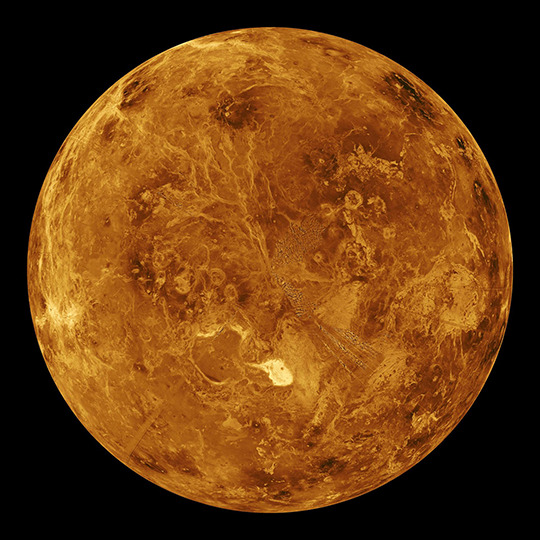
Since Venus formed at the same time as Earth and is similar in size, scientists believe it once had the same amount of water our planet does. Today, hellish Venus has hardly any water, a fact scientists have struggled to explain completely. (Image credit: NASA; research credit: M. Chaffin et al.; via Gizmodo)
Read the full article
100 notes
·
View notes
Text
don't mess this up
964 notes
·
View notes
Text
the tension in that scene was breathtaking. The music in the background. The memories being projected not only on the background but also on Dazai himself. Dazai’s speech being interrupted by the sound of their abilities working together for the first time ever to transition back to the control room. The pause and Dazai’s expression while Chuuya is fighting for his life. Beautiful.
#I knooow we only got flashbacks to scenes we already know but I did not expect anything else because of the budget#I think all of this is best case scenario because it’s very manga faithful with the beautiful atmosphere that’s very unique to animation#bungou stray dogs#bsd#bsd s5#soukoku#osamu dazai#chuuya nakahara#only thing I wish this was how the episode ended cuz that cliffhanger is just awesome and it changed the brain chemistry of every bsd fan
168 notes
·
View notes
Text






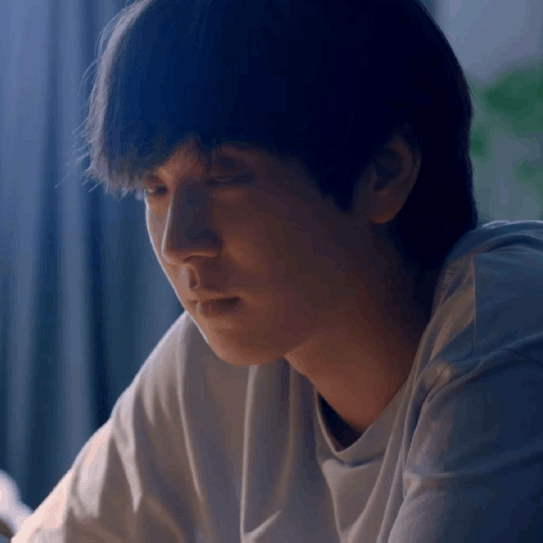

#the teasing atmosphere that both of them had at the start was so adorable#but when the eye contact happened with only few centimeters between them....#the chemistry!#Jeff couldn't look away from Alan#he was so lost in the moment#if Alan didn't panic this would have gone in a very different direction#and after that Jeff looks just whipped and in love while Alan looks shy and cant look at Jeff#they are so precious#please protect both of them#dont hurt Jeff#and let them take care of eachother#pit babe series#pit babe the series#pit babe#alanjeff#alan x jeff#jeff x alan#jeffalan#pon thanapon#sailub hemmawich#sailubpon
55 notes
·
View notes
Photo










There’s a little flame between us. It’s always burning. And I’ve come to believe that tending a fire like that is purpose enough for any life.
#perioddramaedit#weloveperioddrama#periodedit#perioddramasource#lady chatterley's lover#lady chatterleys lover#period movies#shitty things i do for love#my only desire for this adaptation was it to be good enough for marg to be satisfied honestly#baby villetteulogy i hope it happened to be just that!!!!!#i kinda torn here because i loved it but ugh#the way this film trips out the social context and class detail of the book???#and with all that there go most of the psychological complexity of the characters too#i know it's not 1930s anymore but i see no need to play down class tensions#show me how connie and oliver struggle to overcome deeply ingrained prejudices and how painful and sloooow this process is#also constance suffered no inner dilemma about her class based sexu*l disgust and her blooming attraction towards oliver??#and his battle to find RIGHT words to respond to her as a woman he loves rather than a lady he serves???#gone gone goneeeeee#okay i stopped bitchin and now i can freely add that the movie is STILL a better adaptation than i expected#atmosphere! glimpses of an emotional depth!!! chemistry!!!! music!!!! IT'S HERE
355 notes
·
View notes
Text
Shoutout to the way my chemistry bridging unit has reccomended research topics that they expect one page of notes for
Babes you just asked me about the ozone layer you’re getting a fucking powerpoint whether you like it or not
3 notes
·
View notes
Text
New major crosses disciplines to address climate change
New Post has been published on https://thedigitalinsider.com/new-major-crosses-disciplines-to-address-climate-change/
New major crosses disciplines to address climate change
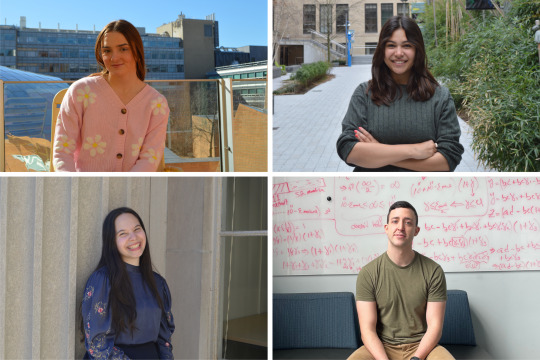

Lauren Aguilar knew she wanted to study energy systems at MIT, but before Course 1-12 (Climate System Science and Engineering) became a new undergraduate major, she didn’t see an obvious path to study the systems aspects of energy, policy, and climate associated with the energy transition.
Aguilar was drawn to the new major that was jointly launched by the departments of Civil and Environmental Engineering (CEE) and Earth, Atmospheric and Planetary Sciences (EAPS) in 2023. She could take engineering systems classes and gain knowledge in climate.
“Having climate knowledge enriches my understanding of how to build reliable and resilient energy systems for climate change mitigation. Understanding upon what scale we can forecast and predict climate change is crucial to build the appropriate level of energy infrastructure,” says Aguilar.
The interdisciplinary structure of the 1-12 major has students engaging with and learning from professors in different disciplines across the Institute. The blended major was designed to provide a foundational understanding of the Earth system and engineering principles — as well as an understanding of human and institutional behavior as it relates to the climate challenge. Students learn the fundamental sciences through subjects like an atmospheric chemistry class focused on the global carbon cycle or a physics class on low-carbon energy systems. The major also covers topics in data science and machine learning as they relate to forecasting climate risks and building resilience, in addition to policy, economics, and environmental justice studies.
Junior Ananda Figueiredo was one of the first students to declare the 1-12 major. Her decision to change majors stemmed from a motivation to improve people’s lives, especially when it comes to equality. “I like to look at things from a systems perspective, and climate change is such a complicated issue connected to many different pieces of our society,” says Figueiredo.
A multifaceted field of study
The 1-12 major prepares students with the necessary foundational expertise across disciplines to confront climate change. Andrew Babbin, an academic advisor in the new degree program and the Cecil and Ida Green Career Development Associate Professor in EAPS, says the new major harnesses rigorous training encompassing science, engineering, and policy to design and execute a way forward for society.
Within its first year, Course 1-12 has attracted students with a diverse set of interests, ranging from machine learning for sustainability to nature-based solutions for carbon management to developing the next renewable energy technology and integrating it into the power system.
Academic advisor Michael Howland, the Esther and Harold E. Edgerton Assistant Professor of Civil and Environmental Engineering, says the best part of this degree is the students, and the enthusiasm and optimism they bring to the climate challenge.
“We have students seeking to impact policy and students double-majoring in computer science. For this generation, climate change is a challenge for today, not for the future. Their actions inside and outside the classroom speak to the urgency of the challenge and the promise that we can solve it,” Howland says.
The degree program also leaves plenty of space for students to develop and follow their interests. Sophomore Katherine Kempff began this spring semester as a 1-12 major interested in sustainability and renewable energy. Kempff was worried she wouldn’t be able to finish 1-12 once she made the switch to a different set of classes, but Howland assured her there would be no problems, based on the structure of 1-12.
“I really like how flexible 1-12 is. There’s a lot of classes that satisfy the requirements, and you are not pigeonholed. I feel like I’m going to be able to do what I’m interested in, rather than just following a set path of a major,” says Kempff.
Kempff is leveraging her skills she developed this semester and exploring different career interests. She is interviewing for sustainability and energy-sector internships in Boston and MIT this summer, and is particularly interested in assisting MIT in meeting its new sustainability goals.
Engineering a sustainable future
The new major dovetail’s MIT’s commitment to address climate change with its steps in prioritizing and enhancing climate education. As the Institute continues making strides to accelerate solutions, students can play a leading role in changing the future.
“Climate awareness is critical to all MIT students, most of whom will face the consequences of the projection models for the end of the century,” says Babbin. “One-12 will be a focal point of the climate education mission to train the brightest and most creative students to engineer a better world and understand the complex science necessary to design and verify any solutions they invent.”
Justin Cole, who transferred to MIT in January from the University of Colorado, served in the U.S. Air Force for nine years. Over the course of his service, he had a front row seat to the changing climate. From helping with the wildfire cleanup in Black Forest, Colorado — after the state’s most destructive fire at the time — to witnessing two category 5 typhoons in Japan in 2018, Cole’s experiences of these natural disasters impressed upon him that climate security was a prerequisite to international security.
Cole was recently accepted into the MIT Energy and Climate Club Launchpad initiative where he will work to solve real-world climate and energy problems with professionals in industry.
“All of the dots are connecting so far in my classes, and all the hopes that I have for studying the climate crisis and the solutions to it at MIT are coming true,” says Cole.
With a career path that is increasingly growing, there is a rising demand for scientists and engineers who have both deep knowledge of environmental and climate systems and expertise in methods for climate change mitigation.
“Climate science must be coupled with climate solutions. As we experience worsening climate change, the environmental system will increasingly behave in new ways that we haven’t seen in the past,” says Howland. “Solutions to climate change must go beyond good engineering of small-scale components. We need to ensure that our system-scale solutions are maximally effective in reducing climate change, but are also resilient to climate change. And there is no time to waste,” he says.
#2023#air#air force#Atmospheric chemistry#awareness#Behavior#Building#carbon#carbon cycle#career#career development#career path#Careers#challenge#change#chemistry#Civil and environmental engineering#classes#Classes and programs#climate#climate change#climate crisis#climate science#computer#Computer Science#course#data#data science#Design#development
0 notes
Text




Here There and Everywhere music video mclennon edition
#i wish I could just watch it like a normal person#not searching for a glimpse of mclennon chemistry#was hoping for a bit more romantic atmosphere for this song#good work though#here there and everywhere#music video#the beatles#john lennon#paul mccartney#mclennon
245 notes
·
View notes
Photo
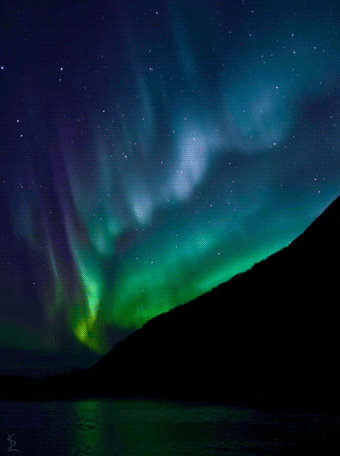
(via GIPHY)
138 notes
·
View notes
Text
have to do a triple chem paper tomorrow and can i just say that paper 2 is a godsend compared to paper 1. fractional distillation? reversible reactions?? freaking potable water? i think i might be in love.
#the topics may be dull#but my god are they easy#organic chemistry#rate of reactions#atmosphere#chemistry#i barely need to revise#physics is gonna suck#but that's future me's problem#so excited for the actual mocks#(/lyiNG)#chemistry student#chemistry studyblr#gcse student#gcse studyblr#studyblr#gcse 2024#HHjhjkhHKghFFGdgf#mmkay monomers can go die in a hole#but c9 is beautiful
14 notes
·
View notes
Text
Physicists describe new type of aurora


For centuries, people in the high latitudes have actually been enthralled by auroras—the northern and southern lights. Yet even after all that time, it appears the ethereal, dancing ribbons of light above Earth still hold some tricks.
In a new research study, physicists led by the University of Iowa report a new function to Earth’s climatic light program. Examining video taken almost twenty years back, the scientists describe numerous circumstances where an area of the diffuse aurora—the faint, background-like radiance accompanying the more brilliant light frequently connected with auroras—goes dark, as if scrubbed by a huge blotter. Then, after a brief duration of time, the blacked-out area all of a sudden comes back.
The scientists state the habits, which they call “diffuse auroral erasers,” has actually never ever been discussed in the clinical literature. The findings appear in the Journal of Geophysical Research Space Physics.
Auroras take place when charged particles streaming from the sun—called the solar wind—communicate with Earth’s protective magnetic bubble. Some of those particles leave and fall towards our world, and the energy launched throughout their crashes with gases in Earth’s environment create the light connected with auroras.
“The biggest thing about these erasers that we didn’t know before but know now is that they exist,” states Allison Jaynes, assistant teacher in the Department of Physics and Astronomy at Iowa and research study co-author. “It raises the concern: Are these a typical phenomenon that has been neglected, or are they uncommon?
“Knowing they exist means there is a process that is creating them,” Jaynes continues, “and it may be a process that we haven’t started to look at yet because we never knew they were happening until now.”
It was on March 15, 2002, that David Knudsen, a physicist at the University of Calgary, established a camera in Churchill, a town along Hudson Bay in Canada, to movie auroras. Knudsen’s group was a little discouraged; the projection required clear, dark skies—typically ideal conditions for seeing auroras—however no stunning lighting was taking place. Still, the group was utilizing a cam specifically created to catch low-level light, just like night-vision safety glasses.
Though the researchers saw just mainly darkness as they looked up with their own eyes, the video camera was getting all sorts of auroral activity, consisting of an uncommon series where locations of the diffuse aurora vanished, then returned.
Knudsen, taking a look at the video as it was being taped, doodled in his note pad, “pulsating ‘black out’ diffuse glow, which then fills in over several seconds.”
“What surprised me, and what made me write it in the notebook, is when a patch brightened and turned off, the background diffuse aurora was erased. It went away,” states Knudsen, a Fort Dodge, Iowa, local who has actually studied aurora for more than 35 years and is a co-author on the research study. “There was a hole in the diffuse aurora. And then that hole would fill back in after a half-minute or so. I had never seen something like that before.”
The note lay inactive, and the video unstudied, up until Iowa’s Jaynes commended finish trainee Riley Troyer to examine. Jaynes learnt more about Knudsen’s recording at a clinical conference in 2010 and referenced the eraser note in her doctoral thesis on diffuse aurora a couple of years later on. Now on the professors at Iowa, she wished to discover more about the phenomenon.
“I knew there was something there. I knew it was different and unique,” states Jaynes, assistant teacher in the Department of Physics and Astronomy. “l had some ideas how it could be analyzed, but I hadn’t done that yet. I handed it to Riley, and he went much further with it by figuring out his own way to analyze the data and produce some significant conclusions.”
Troyer, from Fairbanks, Alaska, used up the task with gusto.
“I’ve seen hundreds of auroras growing up,” states Troyer, who remains in his 3rd year of doctoral research studies at Iowa. “They’re part of my heritage, something I can study while keeping ties to where I’m from.”
Troyer developed a software application to type in on frames in the video when the faint erasers showed up. In all, he cataloged 22 eraser occasions in the two-hour recording.
“The most valuable thing we found is showing the time that it takes for the aurora to go from an eraser event (when the diffuse aurora is blotted out) to be filled or colored again,” states Troyer, who is the paper’s matching author, “and how long it takes to go from that erased state back to being diffuse aurora. Having a value on that will help with future modeling of magnetic fields.”
Jaynes states learning more about scattered auroral erasers belongs to studying DNA to comprehend the whole body.
“Particles that fall into our atmosphere from space can affect our atmospheric layers and our climate,” Jaynes states. “While particles with diffuse aurora may not be the main cause, they are smaller building blocks that can help us understand the aurora system as a whole, and may broaden our understanding how auroras happen on other planets in our solar system.”
###
Study co-authors are Sarah Jones, from NASA Goddard Space Flight Center and who was part of Knudsen’s group in Churchill, and Trond Trondsen, with Keo Scientific Ltd., who developed the video camera that shot the diffuse aurora.
NASA supported the information analysis.
New post published on: https://livescience.tech/2021/05/07/physicists-describe-new-type-of-aurora/
#astronomy#astrophysics#ATMOSPHERIC CHEMISTRY#ENERGY SOURCES#geophysics#SPACE/PLANETARY SCIENCE#STARS/THE SUN
0 notes